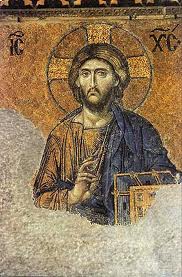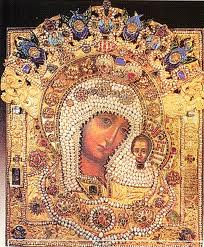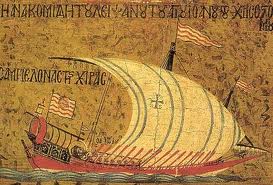|
Byzantine art was, above all, a religious art. It was serious, other-worldly, and conservative; the Byzantine artist did not aspire to freedom of individual interpretation but was the voice of orthodox dogma. The choice of subjects and the attitudes and expressions of figures were determined according to traditional schemes charged with theological meaning.
Although Byzantine artists produced panel paintings, frescos, manuscript illuminations, ivories, enamels, textiles, jewellery, and metalwork of high quality, Byzantine art is seen at its finest and most typical in the mosaic decoration of churches.

The most important and famous artists and sculptors of the Middle Ages included Donatello, Giotto, Leon Battista Alberti, Cimabue, Filippo Brunelleschi, Fra Angelico and Lorenzo Ghiberti.
Byzantine artists created impressive and innovative forms in architecture which proves their ability to think three-dimensionally. But otherwise their art was one of surfaces. By the fifth century three-dimensional sculpture, which had been a prominent form in Hellenistic and Roman art, was no longer produced.

During the Middle Byzantine period, figural images and especially icons were increasingly employed for the decoration of the templon, or eastern sanctuary barrier of the Byzantine church, and its adjacent wall spaces. The first great monasteries were built on Mount Athos (Greece), which would become one of the most important and enduring centers of Byzantine Christianity.
The art of Byzantium was influenced by the elaborate ceremonies at the emperor's court in Constantinople, the largest and most impressive city in Europe. Illuminated books were painted with gold and bright colors, much like the jewels and precious metals worn by the emperor. Byzantine artists used a set of standard compositions and facial types but also strove to portray the human form in a natural way.

Between 1204 and 1261, Constantinople was in the hands of the Latin Crusaders, but the return of the Byzantine Emperors to the city initiated a final period of great diversity in art. Art from Constantinople, the Balkans and Russia show the final phase of refinement of distinctively Orthodox forms and functions, while Crete artists like Angelos Akotantos signed their icons and merged Byzantine and Italian styles. Up to the end of the Byzantine Empire, with the fall of Constantinople to the Ottoman Turks in 1453, manuscripts, micromosaics and metalwork demonstrates the virtuosity of its artists.
|

![]()


